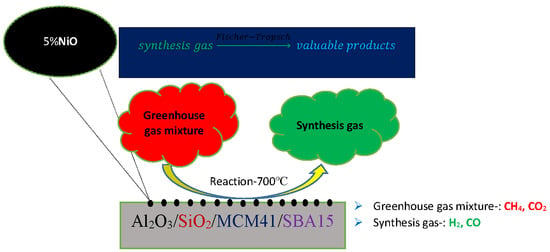Influence of Nature Support on Methane and CO2 Conversion in a Dry Reforming Reaction over Nickel-Supported Catalysts
Abstract
Share and Cite
Fakeeha, A.H.; Kasim, S.O.; Ibrahim, A.A.; Abasaeed, A.E.; Al-Fatesh, A.S. Influence of Nature Support on Methane and CO2 Conversion in a Dry Reforming Reaction over Nickel-Supported Catalysts. Materials 2019, 12, 1777. https://doi.org/10.3390/ma12111777
Fakeeha AH, Kasim SO, Ibrahim AA, Abasaeed AE, Al-Fatesh AS. Influence of Nature Support on Methane and CO2 Conversion in a Dry Reforming Reaction over Nickel-Supported Catalysts. Materials. 2019; 12(11):1777. https://doi.org/10.3390/ma12111777
Chicago/Turabian StyleFakeeha, Anis Hamza, Samsudeen Olajide Kasim, Ahmed Aidid Ibrahim, Ahmed Elhag Abasaeed, and Ahmed Sadeq Al-Fatesh. 2019. "Influence of Nature Support on Methane and CO2 Conversion in a Dry Reforming Reaction over Nickel-Supported Catalysts" Materials 12, no. 11: 1777. https://doi.org/10.3390/ma12111777
APA StyleFakeeha, A. H., Kasim, S. O., Ibrahim, A. A., Abasaeed, A. E., & Al-Fatesh, A. S. (2019). Influence of Nature Support on Methane and CO2 Conversion in a Dry Reforming Reaction over Nickel-Supported Catalysts. Materials, 12(11), 1777. https://doi.org/10.3390/ma12111777







